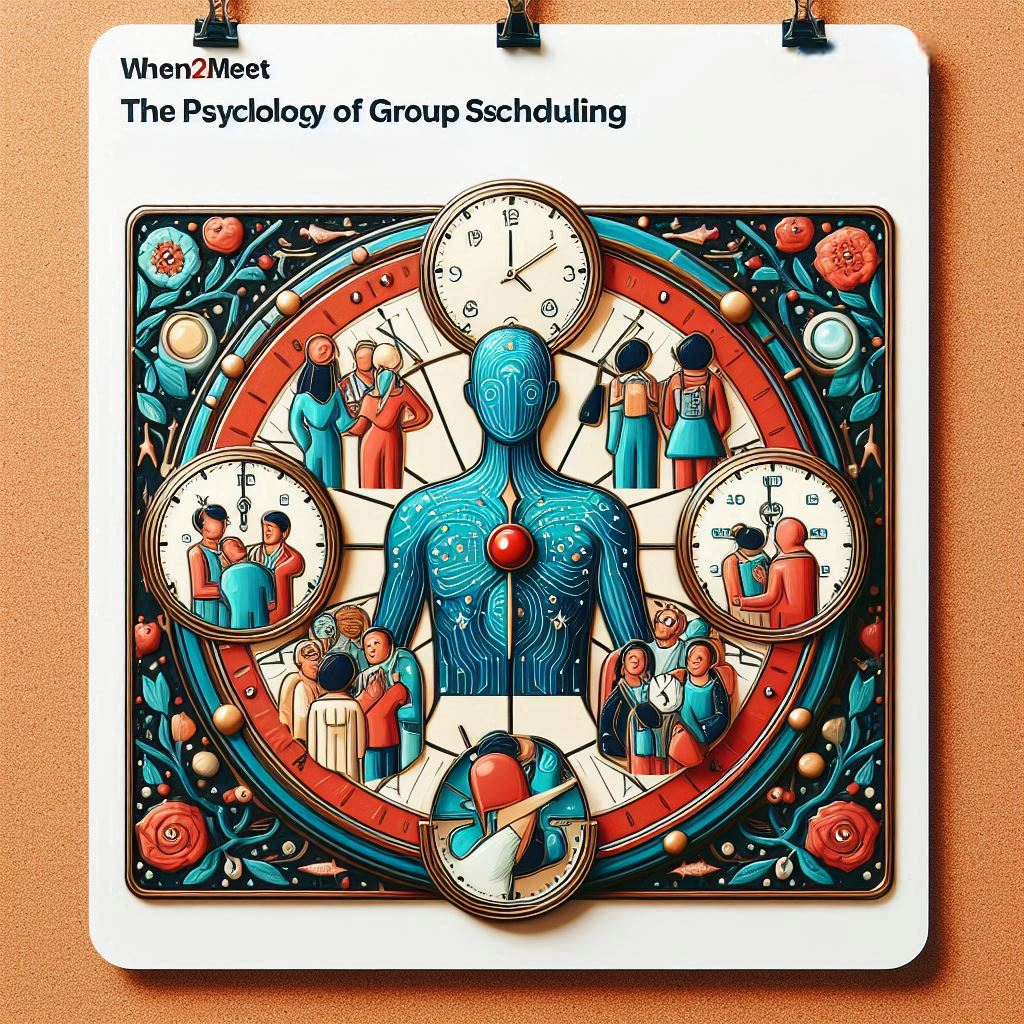When2meet: The Ultimate Scheduling Tool

We’ll take an in-depth look at When2meet: what it is, how it works, its features, use cases, pros and cons, and comparisons with similar tools. We’ll also provide a comprehensive guide on how to use it effectively for both professional and personal scheduling needs.
Managing time effectively is not just a personal virtue it’s a collective necessity. Whether you’re coordinating a team meeting, planning a group study session, or organizing a social event, one of the most persistent challenges is finding a time that works for everyone. This is where When2meet enters the picture a free, no-frills online scheduling tool designed to simplify group availability coordination.
While there are countless tools on the market that aim to streamline calendar sharing and event planning, When2meet stands out for its simplicity, accessibility, and intuitive interface.
What is When2meet?
When2meet is a web-based application that allows users to find mutually available times for meetings or events without needing to create an account or install any software. It functions by allowing participants to indicate their availability on a visual calendar grid, making it easy to spot overlapping free times.
When2meet poll
The When2meet poll is a smart and user-friendly scheduling tool that allows groups to visually share their availability to find the best time to meet. Instead of sending multiple messages or emails back and forth, the poll creates a simple, color-coded grid that shows everyone’s available time slots. When an event organizer sets up a When2meet poll, they choose a range of dates and times. Participants then visit the poll via a unique link and select their available times by clicking or dragging across the time blocks. As each person inputs their schedule, the grid updates in real time darker green shades indicate more people are available at that time.
This instant visibility helps groups quickly identify the most suitable time slot that works for everyone. What makes the When2meet poll especially convenient is that it doesn’t require users to create an account, making participation easy and fast for all involved. Whether you’re coordinating a team meeting, a group project, or a social event, the When2meet poll makes scheduling smooth, transparent, and stress-free.
When2meet time zones

When2meet simplifies scheduling across different time zones by automatically adjusting availability times based on each participant’s local time. When someone creates a When2meet event, they can choose a specific time zone for the event, ensuring consistency in planning. Participants viewing the availability grid will see the time slots translated into their own time zone if they’re logged in or if their browser shares location information.
This eliminates confusion and miscommunication caused by time differences. However, if participants don’t allow time zone detection, they may see the schedule in the creator’s selected time zone, so it’s essential to confirm time zone settings manually when needed. This feature is especially helpful for remote teams, international meetings, and online events, making coordination seamless no matter where attendees are located.
When2Meet does adjust for time zones
When you create a new When2Meet event, you can choose the time zone for the event. Once it’s set, the availability grid is based on that selected time zone. When participants open the link, When2Meet attempts to detect their local time zone automatically usually through their browser settings or device location.
The availability grid they see will be adjusted to their own time zone, making it easier for participants in different parts of the world to mark their availability correctly. However, if the time zone isn’t detected (for example, if someone has location services turned off), they might see the grid in the event creator’s time zone instead.
So while When2Meet does support time zone adjustment, it relies on participants’ browsers to display the correct local time. It’s always a good idea to double-check the time zone setting during event creation and ask participants to confirm their time zone when filling in their availability especially for international meetings.
A Glimpse into the Tool’s Origins
When2meet was launched as a lightweight alternative to complex scheduling platforms. Designed for ease and accessibility, it eliminates many of the hurdles associated with traditional calendar sharing tools. While the exact development history is not widely publicized, it’s evident that the tool was created to serve the basic need of scheduling without over-engineering the process.
Features of When2meet

Unlike many modern scheduling platforms that come packed with features, When2meet thrives on simplicity. Still, it offers several key functionalities that make it highly effective.
No Account Required: One of the most appreciated features of When2meet is that it does not require users to sign up or log in. This frictionless entry lowers the barrier to use and is especially helpful in scenarios where participants may be unfamiliar with or unwilling to use more complex tools.
Simple Availability Grid: The central feature of When2meet is its grid-based visual interface. Users select their available time blocks by clicking on a calendar, and the grid changes color based on how many people are available at any given time.
Real-Time Updates: As more participants fill out their availability, the grid updates in real time. This allows users to instantly see the most optimal meeting times.
Customizable Time Ranges: Users creating an event can set the date range and times that are relevant, ensuring that participants aren’t overwhelmed with an unnecessarily large window of options.
Anonymity Options: Although users can input their names, they are not required to reveal their identities. This makes the tool suitable for both professional and informal use.
How When2meet Works
Understanding how When2meet operates is essential for getting the most out of the tool. Below is a step-by-step guide on how it functions from both the organizer’s and participants’ perspectives.
Creating a New When2meet Event
- Go to the Website: Start by visiting when2meet.com.
- Enter Event Details: Provide a name for your event and specify the range of dates and time slots you want participants to choose from.
- Generate the Link: When2meet creates a unique URL for the event, which you can share with participants.
Filling Out Availability
- Access the Link: Click on the shared link.
- Input Your Name: You will be prompted to enter a name (it can be a pseudonym).
- Select Time Blocks: Click and drag over the grid to indicate your availability. The grid will show a gradient of green to represent the number of people who are free at any given time.
Finding the Best Time
The visual grid makes it easy to find time blocks where the most participants are available. The darker the green, the more people are free.
Ultimate Guide to When2Meet
Finding a time that works for everyone can feel like solving a puzzle especially when your group spans different time zones, work schedules, and routines. That’s where When2Meet comes in. This simple yet powerful scheduling tool has quietly become a favorite among students, professionals, remote teams, and event planners alike.
You’re coordinating a team meeting, planning a virtual hangout, or organizing a family get-together, When2Meet takes the stress out of finding the perfect time. No complicated logins. No endless email chains. Just a clean, interactive grid where everyone can mark their availability making it clear when everyone is free.
You’ll learn how to use When2Meet effectively, understand how it handles time zones, explore its features, and discover tips to make scheduling smoother than ever. Let’s dive into everything you need to know to make the most of When2Meet.
How to use when2meet

To use When2meet, start by visiting the official website at when2meet.com. First, create a new event by entering the event name, selecting the date range, and choosing a time zone. After that, click “Create Event” to generate a scheduling link. Share this link with everyone you want to invite. Each participant can enter their name and mark their availability on the calendar grid by clicking and dragging across the times they are free.
As more people fill in their availability, the grid updates in real time to show which time slots work best for everyone. The darkest green areas represent the most overlap in availability, making it easy to identify the optimal meeting time. No sign-up is required, and the platform works well on both desktop and mobile browsers, making it convenient for all users.
Use Cases for When2meet
When2meet serves a diverse range of purposes across different domains.
- Academic Use: Professors, study groups, and students frequently use When2meet to coordinate office hours, group projects, and review sessions.
- Professional Meetings: Startups, remote teams, and project managers use it to find the most convenient times for internal syncs and brainstorming sessions.
- Social Events: Friends planning reunions, clubs organizing meetups, or families scheduling holiday dinners all benefit from When2meet’s straightforward scheduling.
- Volunteer and Community Planning: Community organizers and nonprofit groups often use it to coordinate volunteer schedules and event planning without needing complex tools.
Advantages of Using When2meet
Why do people love When2meet? Let’s explore its benefits in detail.
- When2meet’s interface is designed to be intuitive. There’s no need to learn complex features or navigate confusing menus.
- Being entirely web-based and requiring no login means that anyone with a browser can use it. There are no compatibility issues with different devices or operating systems.
- The color-coded availability grid is incredibly useful for instantly recognizing the best meeting times.
- As more users update their availability, the tool dynamically changes to reflect group consensus.
- When2meet is completely free, making it accessible to individuals and organizations of all sizes.
Limitations and Considerations
One major drawback is the lack of integration with Google Calendar, Outlook, or other calendar tools. Users have to manually transfer agreed-upon times. When2meet does not send reminders or notifications, so users need to keep track of their commitments independently. You won’t find options for adding notes, attaching files, or customizing the interface. Because no account is required, data isn’t stored in a user-specific dashboard. While this enhances anonymity, it also means there’s less control over event tracking.
Comparing When2meet to Similar Tools
Several tools on the market offer similar functionalities. Here’s how When2meet stacks up against the competition.
When2meet vs. Doodle
- Doodle offers more features, including calendar integration and poll options.
- When2meet is simpler and doesn’t require sign-ins, making it quicker for one-time use.
When2meet vs. Google Calendar
- Google Calendar excels at recurring meetings and long-term planning.
- When2meet is better for quickly determining group availability without needing calendar permissions.
When2meet vs. Calendly
- Calendly is ideal for individual scheduling, especially in professional contexts.
- When2meet excels at group scheduling where multiple participants need to find overlapping free times.
When2Meet vs. Doodle Which: One to Choose in 2025?
When it comes to scheduling group meetings or events, finding a tool that suits everyone’s needs can make all the difference. In 2025, two of the most popular scheduling platforms remain When2Meet and Doodle. While both aim to simplify the process of finding a common time, they offer different features, levels of complexity, and user experiences. So, which one should you choose? Let’s take a closer look to help you decide.
Features and Customization
Doodle shines when it comes to features. In 2025, it offers advanced options like calendar integrations (Google, Outlook), email notifications, poll deadlines, and even the ability to suggest multiple time zone-friendly options. It’s perfect for teams that use scheduling as part of their workflow. When2Meet, on the other hand, keeps things minimal. It doesn’t connect with your calendar or send reminders—it simply shows everyone’s availability. This can be a plus or minus depending on how much control and automation you need.
Time Zone Handling
Both tools support time zones, but they do so in different ways. Doodle automatically detects and manages time zones for participants, making it ideal for international meetings. When2Meet also supports time zones, but it depends more on the creator’s settings and the user’s browser location. It works well when participants are mindful of their local time zone, but it’s not as seamless as Doodle’s integrated approach.
Accessibility and Privacy
When2Meet is completely free, requires no login, and doesn’t collect personal information unless entered manually. This makes it a privacy-friendly choice and easy for anyone to use without hesitation. Doodle, while offering a free version, now includes more paid features under its Pro plan. Its free version may display ads and push users to sign in for full access, which may be a downside for those wanting a quick and anonymous solution.
Which Should You Choose?
In 2025, choose When2Meet if you want something fast, free, and frictionless—especially for casual groups or one-off events. It’s perfect for spontaneous scheduling where simplicity is key. On the other hand, choose Doodle if you need deeper integration, scheduling polish, and tools that support structured planning with follow-up options.
Ultimately, the right choice depends on your needs. For those who value ease and anonymity, When2Meet continues to be a go-to. For those needing more structure and features, Doodle is still a strong and reliable option.
Best Practices for Using When2meet
To get the most out of When2meet, follow these best practices:
- Keep Date Ranges Short: Limit the number of days and time slots to avoid overwhelming participants.
- Encourage Prompt Responses: The tool is most effective when all participants fill in their availability quickly.
- Use Follow-Up Communication: Since When2meet lacks built-in reminders, use emails or messaging apps to confirm the final schedule.
- Name Participants Clearly: Encourage people to use recognizable names or initials to avoid confusion.
- Screenshot Final Results: Take a screenshot of the agreed-upon time in case someone loses the link or the session expires.
The Psychology of Group Scheduling

Interestingly, tools like When2meet tap into a deeper aspect of human behavior—our aversion to unnecessary complexity and decision fatigue. By offering a visual interface that reduces ambiguity, it helps facilitate consensus without the need for endless back-and-forth communication.
Moreover, seeing the availability of others can create a sense of accountability. People are often more motivated to respond promptly when they can see that others have already done so.
Where Does When2meet Fit In?
In an era dominated by AI-driven assistants and complex project management platforms, When2meet offers a refreshingly minimalistic approach. However, for it to remain competitive, future iterations might consider optional features like:
- Calendar syncing
- Email notifications
- File sharing
- Integration with Zoom or Google Meet
Even without these, its core functionality will likely ensure continued usage by those valuing speed and simplicity.
Conclusion
When2meet stands as a testament to the power of simplicity. It fills a crucial gap in the world of digital tools by offering a no-fuss, instant way to determine group availability. Whether you’re coordinating with coworkers across time zones or trying to gather your friends for a dinner party, When2meet makes the process remarkably easy. Its ability to do one thing exceptionally well help groups find common availability makes it a valuable addition to anyone’s digital toolkit. In a world where digital fatigue is real, When2meet is a breath of fresh air.
FAQs About When2meet
Q. What is When2meet used for?
When2meet is used to find the best times for groups to meet by comparing everyone’s availability on a shared calendar.
Q. Is When2meet free to use?
Yes, it is completely free and doesn’t require any sign-up or payment.
Q. Do I need an account to use When2meet?
No, you can use the tool without creating an account.
Q. How long is a When2meet link active?
The link remains active indefinitely, but it’s best to coordinate promptly in case browser cookies expire or links are lost.
Q. Can I use When2meet on mobile?
Yes, although the experience is more seamless on a desktop, it is still functional on mobile devices.













